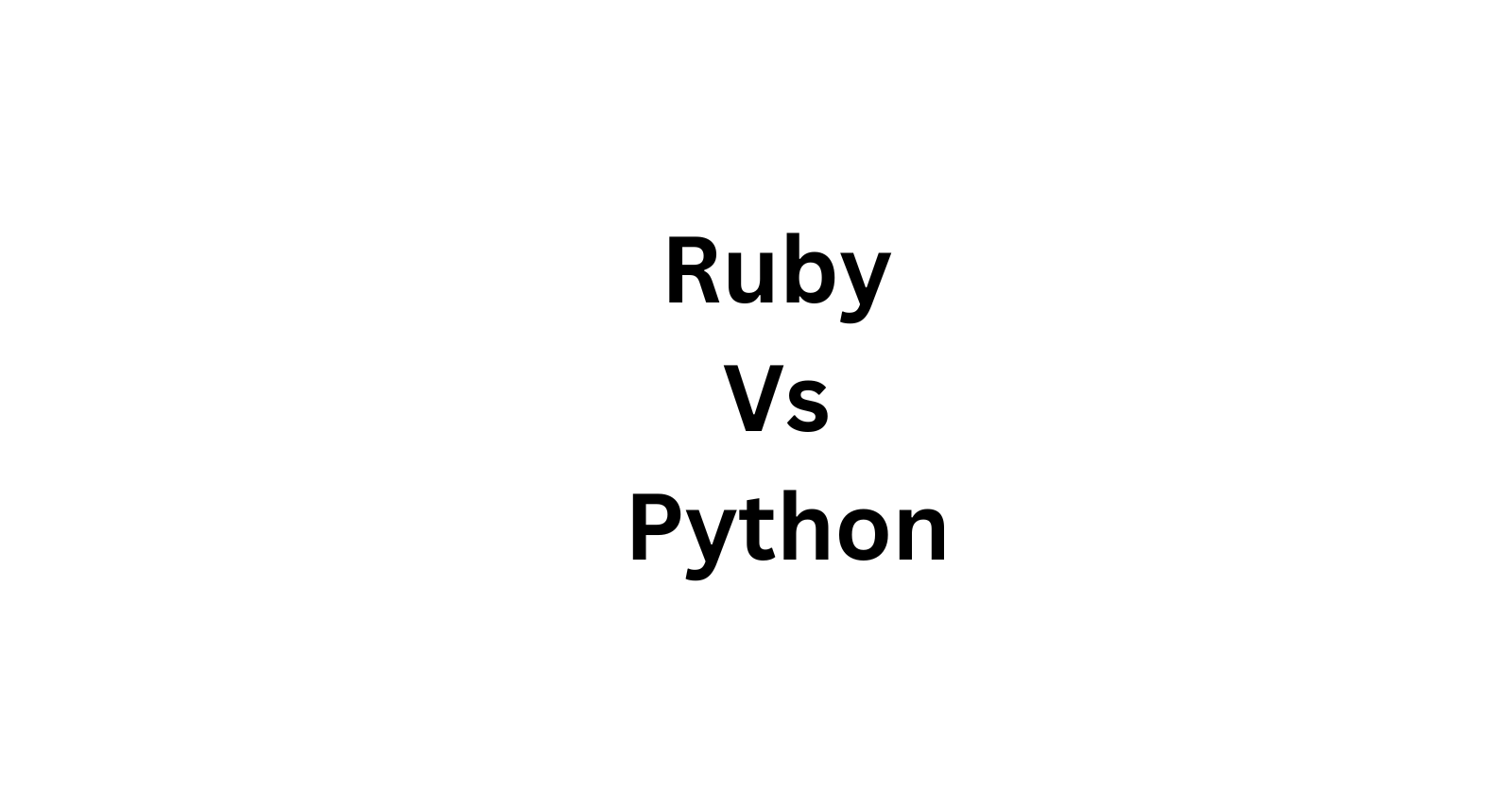Ruby Vs Python
 Amrutha D
Amrutha D
Ruby Vs Python: What are the Differences?
comparison of the differences between the Ruby and Python programming languages. The provided information lists key differences between the two languages, including their support for inheritance, primary usage, object-oriented nature, variable behavior, lambda functions, readability, and the distinction between methods and functions.
Difference between Python and Ruby
This question is divided into two sections that provide an overview of Python and Ruby individually. It covers their characteristics, features, origins, community, and common use cases. The information helps readers understand what each programming language is about.
Differences Between Python and Ruby
This question presents a side-by-side comparison of Python and Ruby, highlighting several aspects, including their creation dates, popular frameworks, object-oriented nature, support for multiple inheritance, lambda functions, libraries, variable behavior, and primary usage. This information offers a concise overview of the key differences between the two languages.
Stark Overflow Questions: Ruby vs Python
This question doesn't have a direct answer but seems to indicate the existence of questions related to Ruby vs Python on a platform called "Stark Overflow." The "Stark Overflow Questions" section may contain questions and discussions comparing Ruby and Python.
Google Trends: Python vs Ruby
This question doesn't have a direct answer but likely points to Google Trends data comparing the popularity and search interest of Python and Ruby over time. Google Trends can provide insights into the relative popularity of these languages.
Advantages of Python
This question is asking about the advantages or pros of using the Python programming language. The provided information lists various advantages of Python, such as its readability, extensive library, cross-platform compatibility, simple syntax, a large standard library, and support for database interfaces. These advantages make Python an attractive choice for many developers.
Advantages of Ruby
This question is asking about the advantages or pros of using the Ruby programming language. The provided information mentions the advantages of Ruby, including its clean syntax, open-source nature, speed of development, and the freedom it offers to developers. These advantages make Ruby suitable for web application development.
Disadvantages of Python
This question is asking about the disadvantages or cons of using the Python programming language. The provided information lists several drawbacks, such as limited platform support, challenges in mobile app development, runtime errors due to Python's dynamic nature, and underdeveloped database access layers. These drawbacks highlight some of the limitations of Python.
Disadvantages of Ruby
This question is asking about the disadvantages or cons of using the Ruby programming language. The provided information mentions the drawbacks of Ruby, including difficulties in debugging, limited use cases outside of web development, limited documentation, and community support, challenges in finding gems and libraries, and a decline in its popularity. These drawbacks indicate potential issues when working with Ruby.
Companies using Python and Ruby:
The information provided lists some notable companies that use Python and Ruby. For Python, companies like YouTube, Instagram, Spotify, Reddit, and Dropbox are mentioned. For Ruby, companies like Hulu, Basecamp, GitHub, and Airbnb are listed. This information highlights the real-world usage of these programming languages in the industry.
TIOBE Ratings
TIOBE is an index that measures the popularity of programming languages. The information provides TIOBE ratings for Python (rating of 3) and Ruby (rating of 11). These ratings suggest that Python is more popular than Ruby according to the TIOBE index.
Average Salaries:
The average salaries for Python and Ruby developers in the United States are given. Python developers have an average salary of $120,255 per year, while Ruby developers earn an average of $134,029 per year. This information gives insights into the earning potential of developers working with these languages in the U.S.
Features of Python and Ruby:
The features of both Python and Ruby are outlined. For Python, features include ease of learning, a large standard library, support for dynamic data types, and integration with other languages. For Ruby, features include a clean syntax, scalability, suitability for web development, and a rich set of built-in functions. These descriptions provide a summary of what each language offers.
In summary, the information provided covers various aspects of Python and Ruby, including their differences, advantages, disadvantages, real-world usage by companies, popularity ratings, and key features. This information is valuable for individuals considering which language to use for their specific programming needs.
Subscribe to my newsletter
Read articles from Amrutha D directly inside your inbox. Subscribe to the newsletter, and don't miss out.
Written by

Amrutha D
Amrutha D
Gen AI Video Creator | Gen AIOps | AIOps Cloud DevOps Engineer | Let's Connect & share Technical knowledge & grow together in Technologies Everyday..